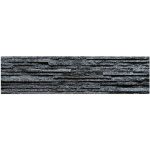Introduction
Cultured stone columns have become a popular choice for enhancing the architectural beauty of buildings and outdoor spaces. These columns offer a versatile and durable alternative to traditional stone columns, providing a cost-effective way to add elegance and character to any design. In this article, we will explore the various aspects of cultured stone columns, including their benefits, applications, installation process, and maintenance.
Benefits of Cultured Stone Columns
Cultured stone columns offer a range of benefits that make them an attractive option for both residential and commercial projects. One of the primary advantages of cultured stone columns is their versatility in design. These columns can be customized to match the aesthetic of any architectural style, whether it be classic, modern, or rustic. They are available in a wide variety of colors, textures, and finishes, allowing for endless design possibilities.
In https://www.fs-slate.com/roofing-slate/ to their aesthetic versatility, cultured stone columns are also highly durable and long-lasting. Made from a combination of natural stone aggregates, cement, and other materials, these columns are designed to withstand harsh weather conditions and the test of time. They are resistant to fading, chipping, and cracking, making them a reliable choice for outdoor applications.
Another key benefit of cultured stone columns is their cost-effectiveness. Compared to natural stone columns, cultured stone columns are more affordable while still providing the same luxurious look and feel. This affordability makes them a popular choice for homeowners and builders looking to enhance their properties without breaking the bank.
Applications of Cultured Stone Columns
Cultured stone columns can be used in a variety of applications to enhance the overall look and feel of a space. One common use of cultured stone columns is in the construction of entryways and porches. These columns can add a touch of elegance and sophistication to the entrance of a home or building, creating a welcoming and impressive first impression.
Cultured stone columns are also commonly used in the construction of outdoor living spaces, such as patios, gazebos, and pergolas. These columns can help define the boundaries of an outdoor area and provide structural support for overhead structures like pergolas. Additionally, cultured stone columns can be used to create decorative elements, such as water features or fireplaces, that enhance the overall ambiance of an outdoor space.
In commercial settings, cultured stone columns are often used to add a sense of grandeur and sophistication to buildings and public spaces. They can be found in hotels, resorts, restaurants, and retail establishments, where they serve as focal points that draw attention and create a lasting impression on guests and visitors.
Installation Process
The installation of cultured stone columns requires careful planning and attention to detail to ensure a seamless and long-lasting result. The following steps outline the typical installation process for cultured stone columns:
1. Planning: Before beginning the installation, it is important to determine the size, shape, and style of the cultured stone columns to be used. This will help ensure that the columns are properly sized and positioned to achieve the desired aesthetic effect.
2. Preparation: The installation site must be properly prepared before installing the cultured stone columns. This may involve clearing the area of debris, leveling the ground, and creating a stable foundation for the columns to rest on.
3. Assembly: Depending on the design of the columns, they may need to be assembled on-site or pre-fabricated off-site and then installed. Care must be taken to ensure that the columns are securely fastened and properly aligned to maintain structural integrity.

4. Finishing: Once the columns are installed, any gaps or seams must be filled and sealed to prevent water infiltration and maintain the appearance of the columns. Finishing touches, such as painting or sealing, may also be applied to enhance the overall look of the columns.
5. Inspection: Finally, a thorough inspection of the installed cultured stone columns should be conducted to ensure that they meet all safety and quality standards. Any necessary adjustments or repairs should be made at this time to ensure the longevity of the columns.
Maintenance of Cultured Stone Columns
Proper maintenance is essential to ensure the longevity and beauty of cultured stone columns. While these columns are durable and resistant to the elements, regular care and maintenance can help prevent damage and extend their lifespan. The following tips outline best practices for maintaining cultured stone columns:
1. Cleaning: Cultured stone columns should be regularly cleaned to remove dirt, debris, and other contaminants that can accumulate on the surface. A mild detergent and water solution can be used to gently scrub the columns, followed by a thorough rinse with clean water.
2. Sealing: To protect the surface of cultured stone columns from staining and discoloration, it is recommended to apply a sealer periodically. This sealer helps repel water and other liquids, preventing them from penetrating the surface of the columns and causing damage.
3. Inspection: Regular inspections of cultured stone columns should be conducted to check for any signs of wear, damage, or deterioration. Any cracks, chips, or other issues should be addressed promptly to prevent further damage and maintain the structural integrity of the columns.
4. Repair: In the event that cultured stone columns become damaged, repairs should be made promptly to prevent the issue from worsening. Depending on the extent of the damage, repairs may involve patching, sealing, or replacing damaged sections of the columns.
Conclusion
Cultured stone columns offer a versatile and durable solution for enhancing the architectural beauty of buildings and outdoor spaces. With their customizable design options, durability, affordability, and ease of maintenance, cultured stone columns have become a popular choice for homeowners, builders, and designers looking to add elegance and character to their projects. By understanding the benefits, applications, installation process, and maintenance requirements of cultured stone columns, individuals can make informed decisions about incorporating these decorative elements into their designs.
